Sports
/ArcaMax

Can you count 17,000 crows or 8 bald eagles in Pittsburgh?
PITTSBURGH — Whether it's helping to count 17,000 crows, 3,636 starlings or eight bald eagles in Pittsburgh like last year, the 125th Annual Audubon Christmas Bird Count needs you.
This annual census of the birds, the world's longest-running citizen science project, has been a long tradition nationally, with Pittsburgh records dating back to ...Read more

Dennis Anderson: Grand Marais maple syrup producers tap into conflict with Minnesota DNR
MINNEAPOLIS — Selling bikes is interesting, but being in the woods in spring, gathering maple sap, is addictive, a distinction Mark and Melinda Spinler know well.
The Spinlers live about 7 miles outside of Grand Marais, the small town on the North Shore that was more quaint than trendy when the couple moved there in 1984.
Mountain biking ...Read more
Best times for anglers
(Table for Dec. 29-Jan. 12)
This table lists top fishing times and days for the coming weeks. For best results, begin fishing one hour before and continue one hour after the times given. Times apply to all time zones.
———
Sunday…………...........10:45 a.m........……….....................................................11:15 p....Read more
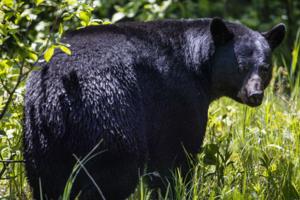
Has bird flu spread to bobcats, bears and deer in Minnesota? Research aims to find out.
MINNEAPOLIS — Wildlife researchers at the University of Minnesota are poised to test wild birds and mammals for avian influenza when the animals are found sick or dead in natural landscapes across the state.
The $1.26 million project, awaiting final funding approval from Gov. Tim Walz, seeks to collect 9,000 swabs from a variety animals. The ...Read more
Best times for anglers
(Table for Dec. 22-Jan. 5)
This table lists top fishing times and days for the coming weeks. For best results, begin fishing one hour before and continue one hour after the times given. Times apply to all time zones.
———
Sunday………................5:30 a.m......…………………..............................................5:50 ...Read more

Chronic wasting disease pops up in a whitetail deer in western Minnesota
MINNEAPOLIS — A buck shot by a hunter near Wheaton in western Minnesota tested positive for chronic wasting disease (CWD), the first time the deer and elk disease has been detected in that area of the state.
The Department of Natural Resources announced the finding Thursday in a news release. Erik Hildebrand, DNR wildlife health supervisor, ...Read more
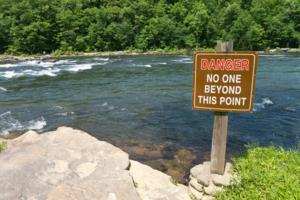
'You are not dying on me': Pleasantries over pasta after angler saves fellow fisherman's life
PITTSBURGH — There's nothing quite like a spaghetti dinner to warm the hearts of two anglers meeting after one saved the other from drowning.
Guy Norelli and Jim Harrold, along with their wives, met for the first time in 2022 at the Sons and Daughters of Italy's monthly spaghetti dinner in Glassport.
They exchanged pleasantries over homemade...Read more

Dennis Anderson: Is it muskie fishing, or muskie cheating? With new sonar gadget, it's hard to tell.
MINNEAPOLIS — Freeze-up was a couple of weeks away when Josh Stevenson and I launched his boat recently, looking for a muskie. Tricking one of these toothy behemoths into munching a lure or bait would, we knew, end our season on a happy note, with months of lake and river ice approaching.
Dressed more like deer hunters than anglers, Stevenson...Read more
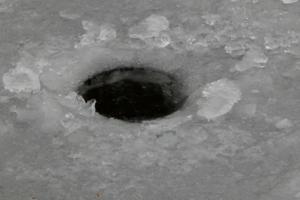
A plunge through thin ice, a panic and a struggle for safety
MINNEAPOLIS — Annie Battle Lake in central Minnesota radiated with the possibility of good fishing as Dean Paron and three friends hauled their sleds of jigging rods and other gear onto the ice.
They fanned out across the lake on the mid-March day in 2021, pursuing trophy bluegill. The fish appeared, but they also made the group work. The ...Read more
Best times for anglers
(Table for Dec. 15-Dec. 29)
This table lists top fishing times and days for the coming weeks. For best results, begin fishing one hour before and continue one hour after the times given. Times apply to all time zones.
———
Sunday.…...................Midnight.....………………….…….........................................12:...Read more

Dennis Anderson: For this traditional archer, bow hunting is a shot back in time
MINNEAPOLIS — When Ron Roettger fired an arrow at a black bear some years ago, the animal never knew what hit him. That’s because Roettger was downwind from his unsuspecting quarry when he drew back his longbow and loosed a homemade arrow.
Distance from archer to bruin: 3 yards.
Roettger, 64, of Star Prairie, Wis., about an hour northeast ...Read more

Firearm deer season is happening in Kansas. Here's what to know about licenses, permits.
WICHITA, Kan. — Firearm deer season has begun in Kansas.
And if you’re planning trying to get a big one for 2024, you shouldn’t just know when and what to hunt. It’s also important to know what licenses you need to have as well as where to hunt to make sure you’re doing so legally.
Regular firearm deer season began Dec. 4 and goes ...Read more
Minnesota reaps windfall from epic comeback of lake trout in Lake Superior
MINNEAPOLIS — Once-rare lake trout in Lake Superior are doing so well that state biologists will use the fish to stock the species in lakes around the state, officials have announced.
This fall, the Department of Natural Resources successfully harvested lake trout eggs from fish captured in two nets set along the North Shore just north of ...Read more
Best times for anglers
(Table for Dec. 8-Dec. 22)
This table lists top fishing times and days for the coming weeks. For best results, begin fishing one hour before and continue one hour after the times given. Times apply to all time zones.
———
Sunday…………............6:10 p.m........……….......................................................6:35 a....Read more

Poacher who decapitated elk and buck sought, Montana officials say. 'What a disgrace.'
A bull elk and a whitetail buck carcass were found decapitated — and the rest of the animals left to waste — in northern Montana, officials say.
Game wardens are seeking any information about the poaching incident, Montana Fish, Wildlife & Parks said on Facebook on Tuesday, Nov. 26.
Photos show the gruesome scene of the carcasses lying ...Read more
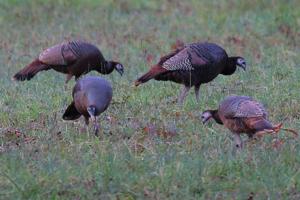
In Georgia, it's getting harder to see a wild turkey
ATLANTA — There’s no problem spotting turkey at your local grocery — U.S. farms produce more than 200 million of the fowl a year, many of them to be carved up for Thanksgiving and Christmas.
But in some parts of the nation it’s increasingly difficult to find the big bird in nature — including in Georgia, where the wild turkey is the ...Read more

Dennis Anderson: On grandpa's Minnesota farm, a shot and a day of searching yields a rare piebald buck
MINNEAPOLIS — Of the more than 153,000 whitetail deer felled in Minnesota so far this fall, Mason Rudolph’s was different. This was a buck, and a good one, a nine-pointer. None of that was unusual. It was the animal’s coloring that was surprising, witnessed initially on a misty morning in farm country, during the firearm season’s first ...Read more

Five wolves killed near Yellowstone. Here's why officials won't press charges.
One of Yellowstone National Park’s most iconic apex predators was found dead with a gunshot wound near the park, Montana game officials said.
Officials learned of the animal’s death when its GPS collar sent a mortality signal, Montana Fish, Wildlife & Parks said in a Nov. 5 news release.
The signal led authorities to a wolf carcass in Wolf...Read more

Dennis Anderson: Wisconsin hunting camp was as much about people as it was about deer
BARRONETT, Wis. — A few days back I wandered into the shack where for long decades I sought refuge at this time of year. The occasion of those visits was the opening weekend of Wisconsin firearms deer hunting, and the place looked like it did when I left it a few seasons ago. A wood-burning stove. A handful of plywood bunks. And a wobbly table...Read more
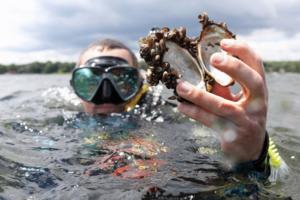
Researchers discover a new health concern in Minnesota lakes infested by zebra mussels
MINNEAPOLIS — Walleyes and perch taken from Minnesota lakes infested with zebra mussels contain starkly higher levels of mercury than those taken from uninvaded lakes, according to new University of Minnesota research published last week.
Average-sized walleyes sampled from mussel-impaired lakes such as Gull, Pelican and Tenmile were more ...Read more
Popular Stories
- Dennis Anderson: Grand Marais maple syrup producers tap into conflict with Minnesota DNR
- Best times for anglers
- Has bird flu spread to bobcats, bears and deer in Minnesota? Research aims to find out.
- Can you count 17,000 crows or 8 bald eagles in Pittsburgh?
- Dennis Anderson: Is it muskie fishing, or muskie cheating? With new sonar gadget, it's hard to tell.





